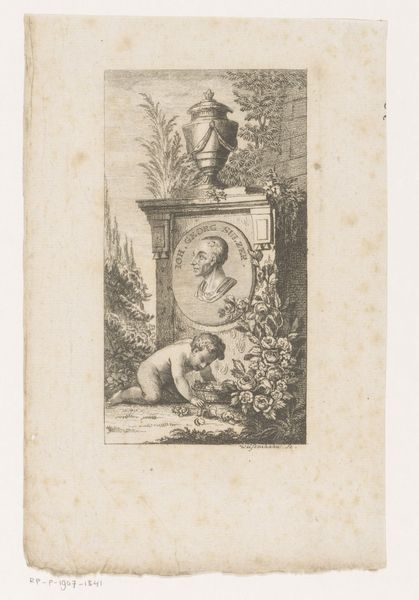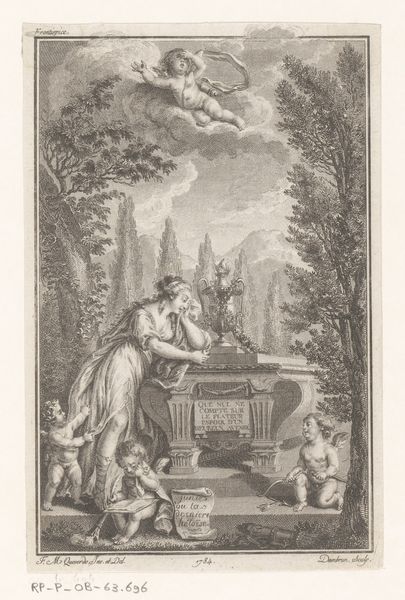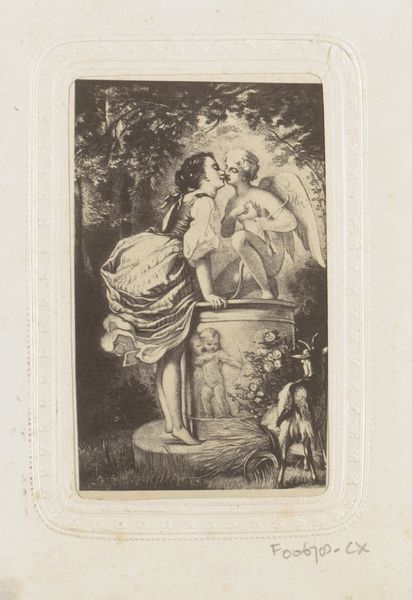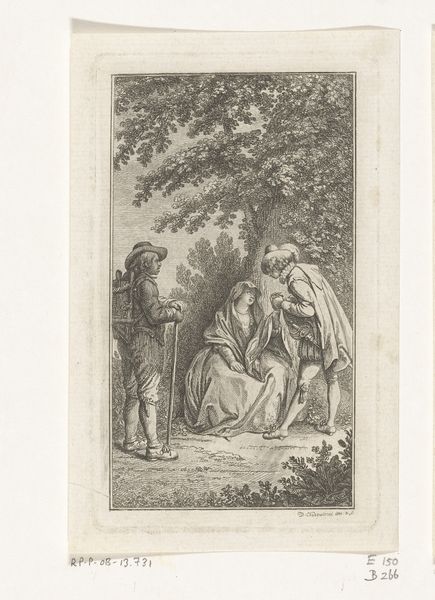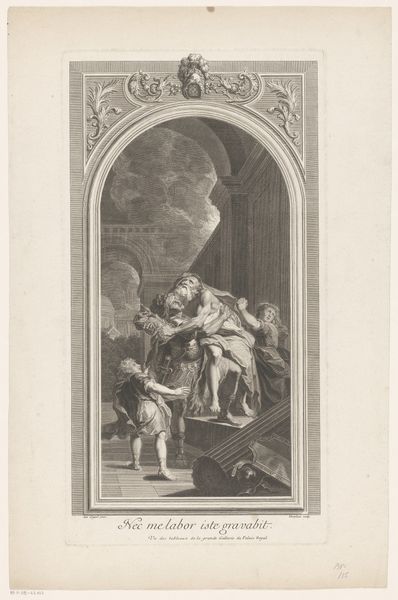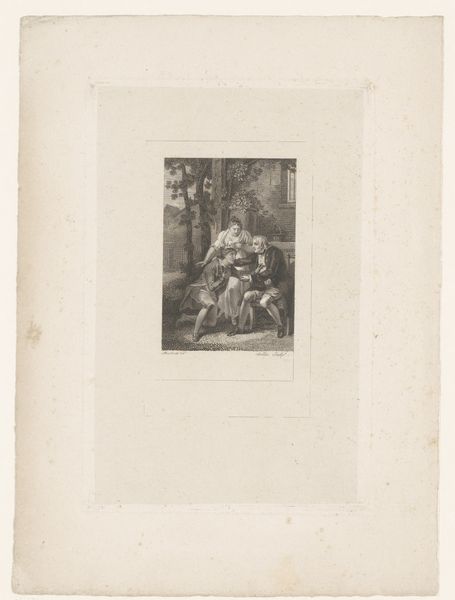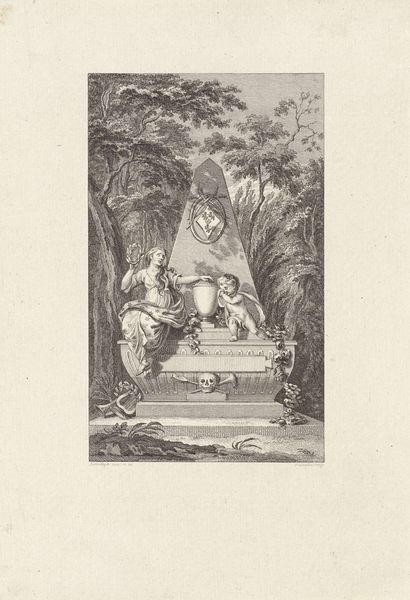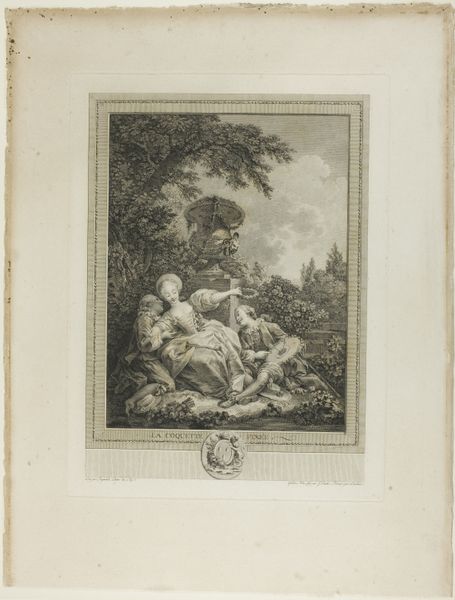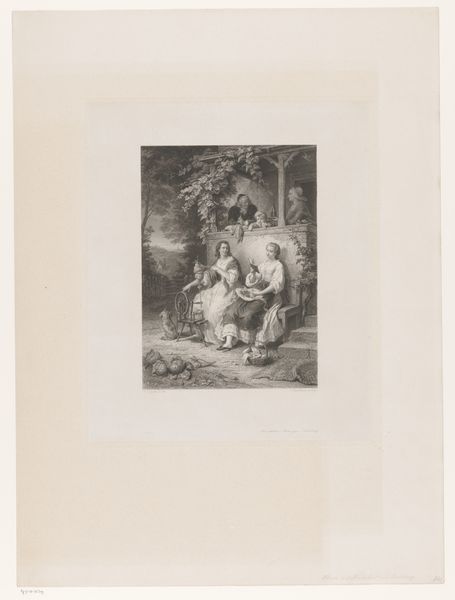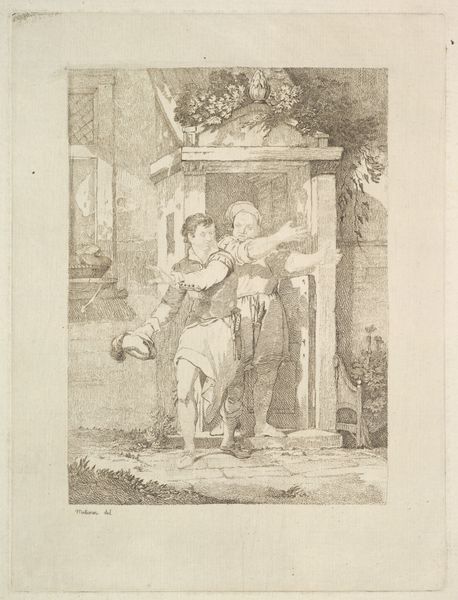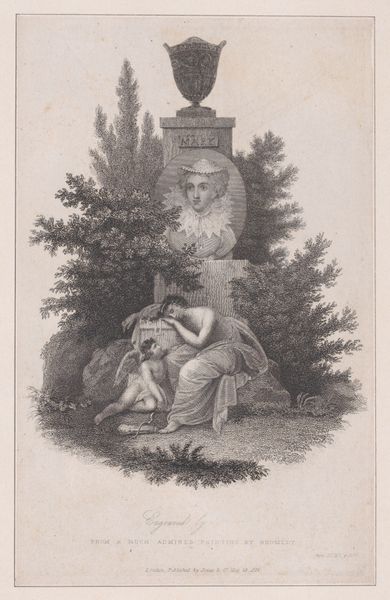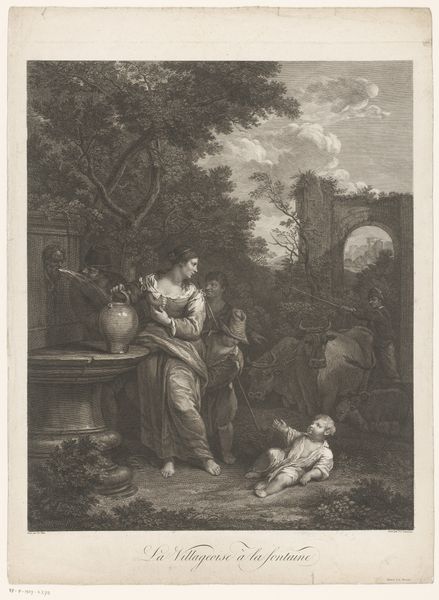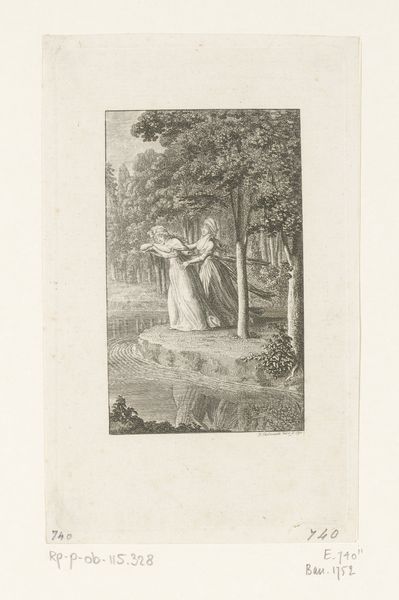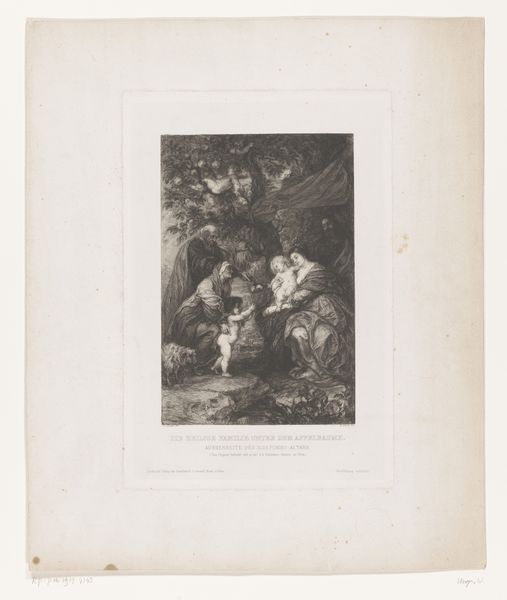
drawing, print, paper, engraving
#
drawing
#
neoclacissism
# print
#
landscape
#
charcoal drawing
#
paper
#
genre-painting
#
history-painting
#
nude
#
remaining negative space
#
engraving
#
watercolor
Dimensions: height 493 mm, width 400 mm
Copyright: Rijks Museum: Open Domain
Curator: This is "Young Woman and Man Sitting on an Edge by a Fountain" by Joseph Franck, believed to have been created sometime between 1835 and 1883. Editor: It's lovely, a little melancholic. The muted tones and figures leaning pensively toward the fountain... I immediately get a sense of wistful contemplation. Curator: Indeed. Franck captures that Neoclassical sensibility beautifully. Fountains have long served as powerful symbols: purification, renewal, and the source of life itself. The figures appear absorbed in their reflection, perhaps seeking some sort of internal clarity? Editor: I'm struck by the printing technique itself, though. It seems like an engraving, probably on paper given the era. All those fine lines, built up laboriously to create the tone and volume... It must have been a painstaking process to produce the final image. You can really sense the manual labor embedded within the aesthetic result. Curator: And look at the detail. The artist employs both crosshatching and delicate stippling. Franck’s image operates on many symbolic registers. Observe the idealized figures reminiscent of classical statuary and the carved putti at the fountain's base. These visual motifs tap into enduring ideals of beauty and innocence. What about the medium, though? An engraving ensures the image can be reproduced, making it more accessible than a painting, perhaps. Editor: Precisely! This affects our perception of value, no? An original painting is unique, and its aura derives from its unrepeatability, to use Walter Benjamin’s concept. This print democratizes access to the image, and alters the way its ‘originality’ functions in culture. Plus, the type of paper and ink they used back then-- those choices determined how the artwork aged over time, affecting how we experience it today. Curator: I hadn't thought of it that way, but you are right: we cannot consider the artistry separate from its medium or means of production! For all its apparent timelessness, it's anchored in its own specific material and economic realities. It makes you ponder what an artwork "means", especially over centuries. Editor: Absolutely! Thinking about its material history makes this seemingly straightforward image so much more intricate, really challenging conventional notions of art as rarefied, individual genius. Curator: It’s always a gift to discover new angles on art through such close examination, thank you for your perspective! Editor: My pleasure. It’s all about engaging with the object, as both art *and* artifact.
Comments
No comments
Be the first to comment and join the conversation on the ultimate creative platform.
